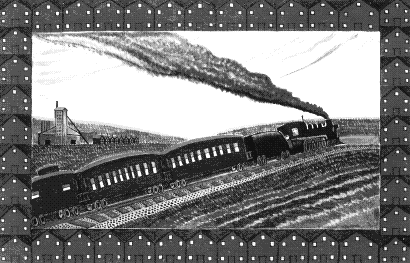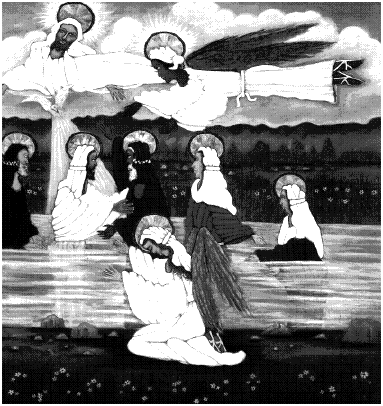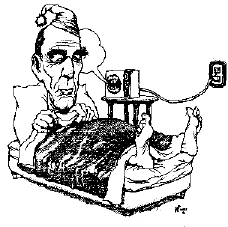Buddhist?" people ask him. The answer: "A non-Buddhist thinks that there is a difference."Going on Being is a fine piece of theological and psychological writing, for Epstein is wise on both psychoanalytic theory and Buddhism. He has obviously read his Freud; his short (three page) summary of psychoanalysis is one of the best I have come across. "Freud's favorite metaphor for psychoanalysis was of an archeological dig,"
Freud was a great explorer, and like the Greek and Roman heroes whom he so admired, his discoveries were often problematic. He positioned the ego between a hostile outer world and a volcanic inner one. He tended to find knots, complexes and stasis; unresolvable guilt feelings, and opposing forces exhausting themselves into paralysis. Sisyphus pushing his rock, Oedipus gouging out his eyes, or Ulysses tied to his ship's mast to avoid the Siren's call... Blind prophets, jealous suitors, and grown men struggling to return to the breast fill his works. He created his own mythology populated by wolf men, rat men, sadistic Prussian counts, and hysterical femme fatales.
But this pursuit, Epstein points out, does not always give us what we want --- that is, to be able to be done with it. "I had the idea...that by excavating the facts, or the memories, of the past, I could be free of their emotional consequences," he writes.
Yet this did not always turn out to be true. Often such understanding does not release us. It gives us an explanation, but we are still stuck with the results and, all too often, the persistent desire to change them.
He compares this with what one can learn from meditation. He describes his own early days of Buddhist practice, where he thought he was involved in "something akin to battle, an ever-deepening, ever-opening confrontation with the way things are."
Obstacles to my peace of mind were everywhere, from the chattering of my thinking to the intensity of my emotions to the rustling of the person next to me. I thought at first that I had to conquer them all.
Only with the passing of time was he able to shift --- to see himself conjoining with reality, dissolving into the "fabric of life...a vast tapestry of which I was but a single stitch." It became more ephemeral. "The closer I looked at things, the less solid they seemed." In perhaps his most revealing passage, he tells of suddenly watching his thoughts bubbling up, realizing that he himself was unnecessary to the process. "Thoughts, feelings, emotions, and reactions all arise of their own accord. It is quite possible to notice them without identifying with their content... they just keep on coming."
Usually we notice ourselves thinking somewhere down the line of a train of associations --- we catch ourselves "lost in thought." But at certain times in mediation we can observe a thought just as it is forming, just as it is bursting into consciousness. This is a very strange experience at first, for it immediately begs the question "Who is thinking?" The thoughts appear to come from nowhere, and the tendency to identify oneself as the thinker of these thoughts is loosened. The thoughts just come and go, artifacts of some mysterious process that we ourselves are also a part of.
As one observes this creation and dissolution, the arising and the passing away, Epstein says that one may find oneself on a wave of terror. If our very thoughts are so insubstantial, then all is insubstantial. If there are no "fixed, independent entities, then how can they die?" At this point, he says, our whole view of death may change.
If things do not exist in their own right and are flickering rather than static, then we can no longer fear their ultimate demise. We may fear their instability, or their emptiness, but the looming threat of death starts to seem absurd. Things are constantly dying, we find. Or rather, they are constantly in flux, arising and passing away with each moment of consciousness.
Epstein has welded together a meaningful study of traditional psychotherapy and Buddhist philosophy, and it may apply to many of us, especially those of us who have gone through therapy. The hopes with which we went into our sessions may have been partly realized: we were able to excavate, to find some rather strange statues in the garden, statues laid down by us so many years ago.
However, once we discovered them, our miseries did not necessarily go away. I may now know why I am so lonely, but that doesn't stop me from continuing to be suspicious of people, and thus, continuing to be lonely. Switch now to meditation. Supposedly it will give us greater peace --- but as Epstein points out, these moments of truth may bring their own terror. The truth is that to seek the truth can be a comic lie.
§ § §Epstein's avid readings in Freud and D. W. Winnicott and his studies with the likes of Jack Kornfield and Ram Dass offer the reader the opportunity to participate in the merging of these two disciplines. In addition, he's a fine writer. He is able to give us insights on varied topics in a very few lines.
The self-starvation of anorexia and the incessant self-criticism of the judging mind are ascetic practices in their own right.
Or, speaking of those peak solitary experiences that we all had as children,
The path to enlightenment requires us to recover the capacity for joy, not by imitating the Buddha's process but by initiating our own.
Or, in an excellent recapitulation of the insights of Alice Miller,
Children who are forced to cope with intrusive or ignoring parental figures develop a compensatory self that manages their parents' needs or neglect. This self develops out of a need for survival, but the price that is paid is a high one. The child's own going on being is sacrificed, and the child loses confidence in himself or herself. Falseness and unreality replace aliveness and vitality.
"Meditation," he concludes, "seems to me an effort at reparenting. The mind is trained through restraint not to interfere or abandon... The reactive mind gives way to a vast holding capacity."

 There's Mamie Deschillie's toothy, smiling "Buffalo," and an anonymously fabricated grinning giraffe made up of over a thousand Coke, 7-Up, Pepsi, Labatts, tonic water and bitter lemon bottle caps. Justin McCarthy's "Washington Crossing the Delaware" shows fourteen or so figures (plus horse) looking tortured and grim, the faces masks of death, even the American flag curled up in a knot of snakes.
There's Mamie Deschillie's toothy, smiling "Buffalo," and an anonymously fabricated grinning giraffe made up of over a thousand Coke, 7-Up, Pepsi, Labatts, tonic water and bitter lemon bottle caps. Justin McCarthy's "Washington Crossing the Delaware" shows fourteen or so figures (plus horse) looking tortured and grim, the faces masks of death, even the American flag curled up in a knot of snakes. 
